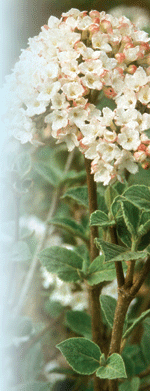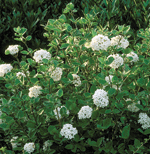Versatile Vibrant Viburnums
go.ncsu.edu/readext?234359
en Español / em Português
El inglés es el idioma de control de esta página. En la medida en que haya algún conflicto entre la traducción al inglés y la traducción, el inglés prevalece.
Al hacer clic en el enlace de traducción se activa un servicio de traducción gratuito para convertir la página al español. Al igual que con cualquier traducción por Internet, la conversión no es sensible al contexto y puede que no traduzca el texto en su significado original. NC State Extension no garantiza la exactitud del texto traducido. Por favor, tenga en cuenta que algunas aplicaciones y/o servicios pueden no funcionar como se espera cuando se traducen.
Português
Inglês é o idioma de controle desta página. Na medida que haja algum conflito entre o texto original em Inglês e a tradução, o Inglês prevalece.
Ao clicar no link de tradução, um serviço gratuito de tradução será ativado para converter a página para o Português. Como em qualquer tradução pela internet, a conversão não é sensivel ao contexto e pode não ocorrer a tradução para o significado orginal. O serviço de Extensão da Carolina do Norte (NC State Extension) não garante a exatidão do texto traduzido. Por favor, observe que algumas funções ou serviços podem não funcionar como esperado após a tradução.
English
English is the controlling language of this page. To the extent there is any conflict between the English text and the translation, English controls.
Clicking on the translation link activates a free translation service to convert the page to Spanish. As with any Internet translation, the conversion is not context-sensitive and may not translate the text to its original meaning. NC State Extension does not guarantee the accuracy of the translated text. Please note that some applications and/or services may not function as expected when translated.
Collapse ▲
Viburnum carlesii ‘Compactum’
Robert E. Lyons ©
“A garden without a viburnum is akin to life without music and art,” says Michael A. Dirr, noted horticulturist. Choices abound. More than 150 species and cultivars range in size from low shrubs to small trees, with white or pink flowers, many fruit colors, for wet or dry areas, from formal to natural, native or exotic and with inspiring fall color. Leaves of viburnums vary in shape, texture and size. Flowering may occur from autumn to June, depending on the species. Viburnums are versatile, fitting into woodland plantings, borders, patios and public areas.
Natives Viburnum alnifolium, known as hobblebush, and V. cassinoides,Witherod viburnum, prefer moist to wet soils and shaded woodland. Both grow to about 6 feet high with white flowers. Hobblebush has red to black summer fruit with deep red foliage in autumn. Witherod viburnum will turn heads with variable fruit colors from green to pink to red, then blue to black. Other natives prefer drier or well-drained soils. Black haw, V. prunifolium , can survive in full sun or heavy shade. Downy arrowwood,V. rafinesquianum , will tolerate many soil types and cold winters. Native viburnums provide food for wildlife and are among the toughest of landscape plants.

Viburnum carlesii
Robert E. Lyons ©
Another attribute of some of the viburnums is a sweet fragrance. While a few are real stinkers, many of the exotic species provide a memorable experience while in bloom. Seasoned gardeners favor Koreanspice, V. carlesii,and the cultivar V. x burkwoodii‘Mohawk’ for a delicious spicy fragrance and striking fall foliage.
V. x carlcephalum ‘Cayuga’ has pink buds that open up to 5-inch, fragrant white, waxy flowers in spring. Leatherleaf viburnum, V. rhytidophyllum, lives up to its common name in cooler climates. Leaves are distinctly corrugated and deep green.
Viburnum awabuki ‘Chindo’ was introduced by J.C. Raulston. The leaves are lustrous and dark green. It will survive in all but wet soils. Growing 10 to 15 feet, it is one of the most desirable evergreen screening plants for sunny or shady areas.
Mike Wilder


